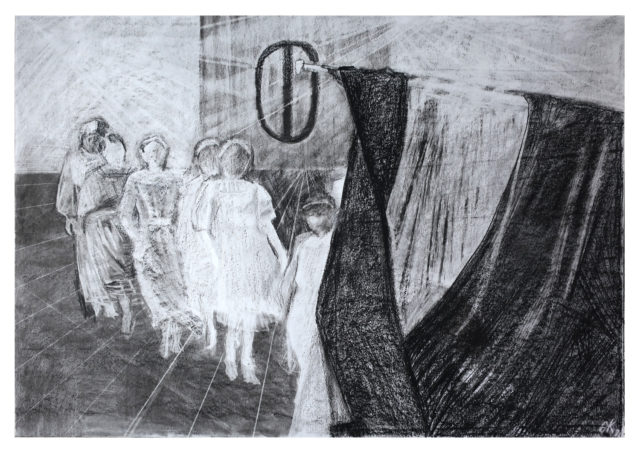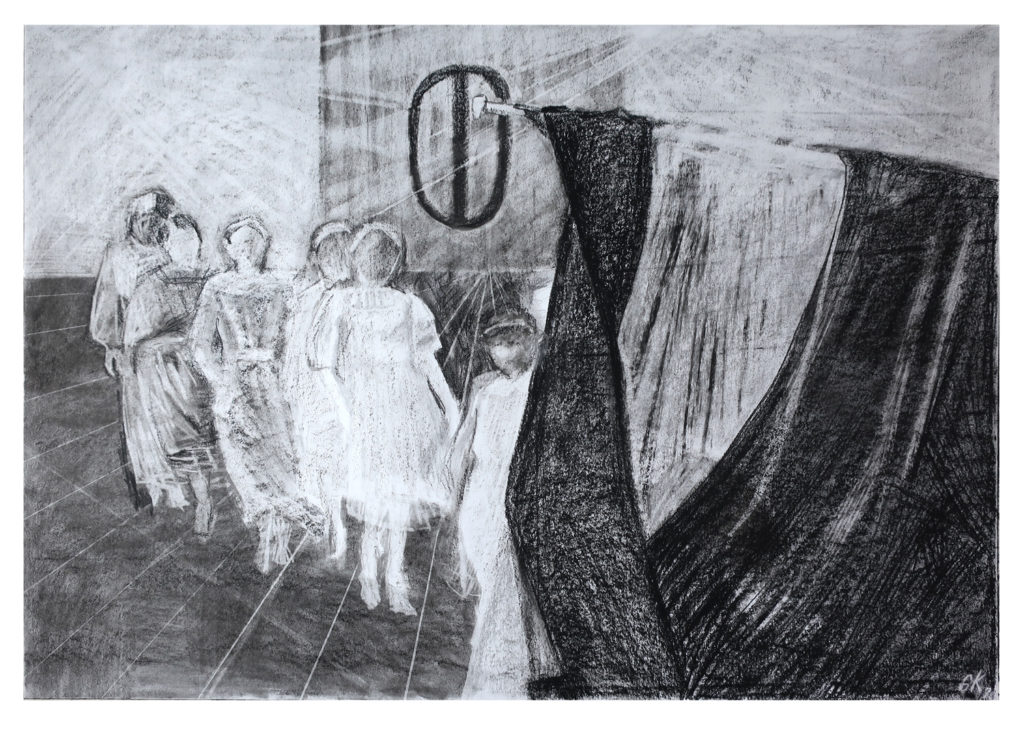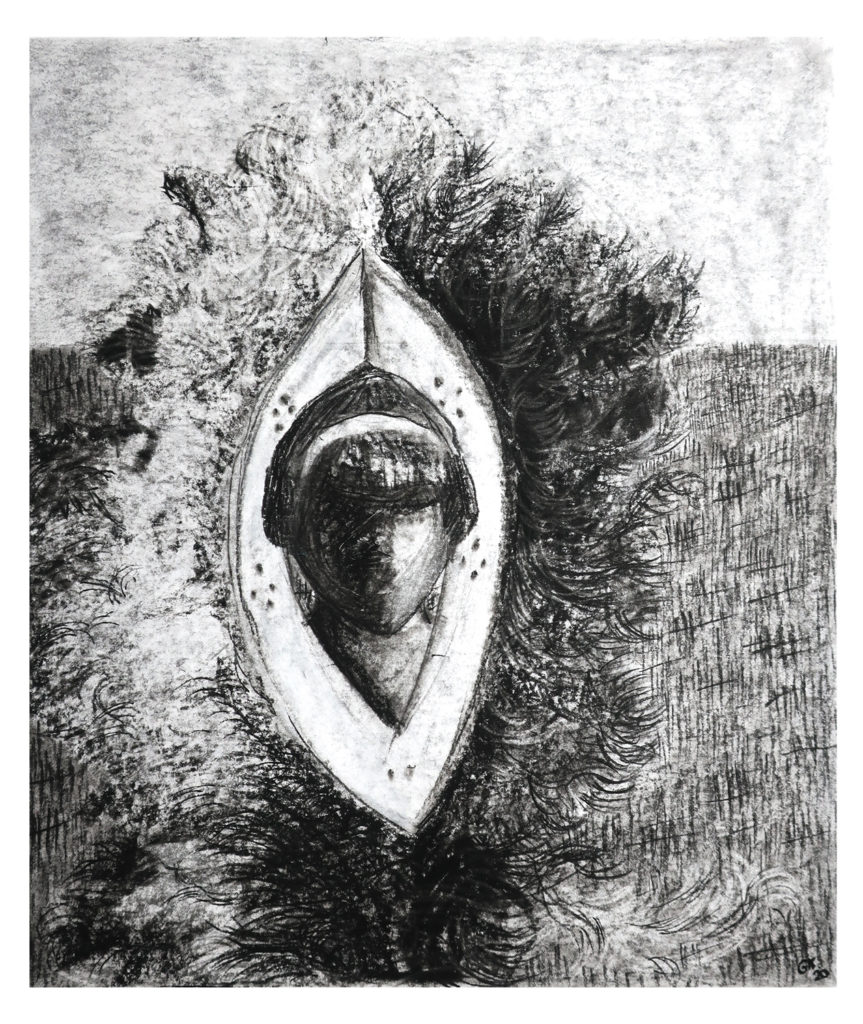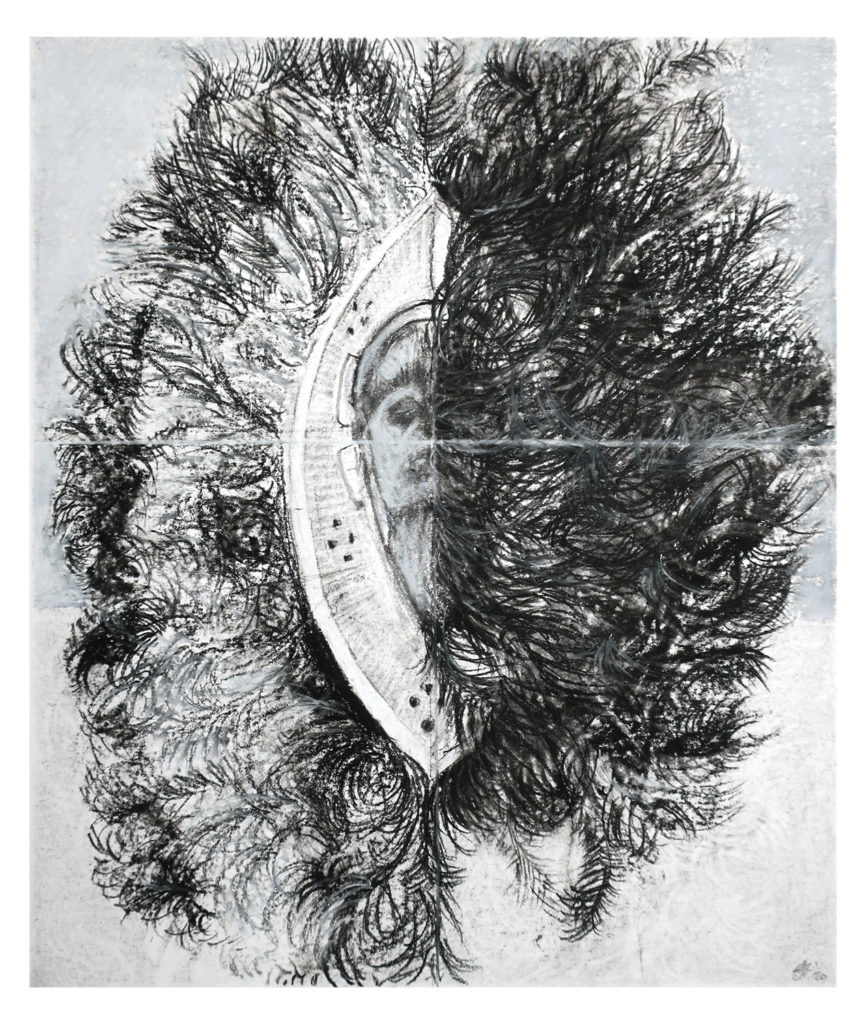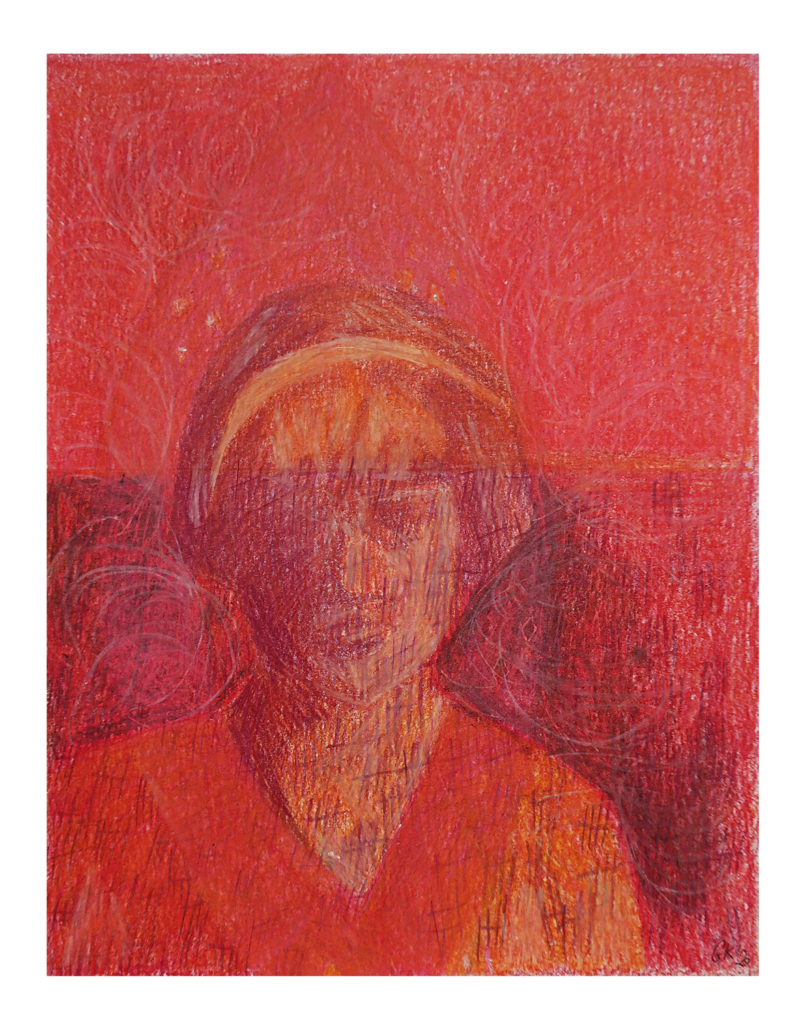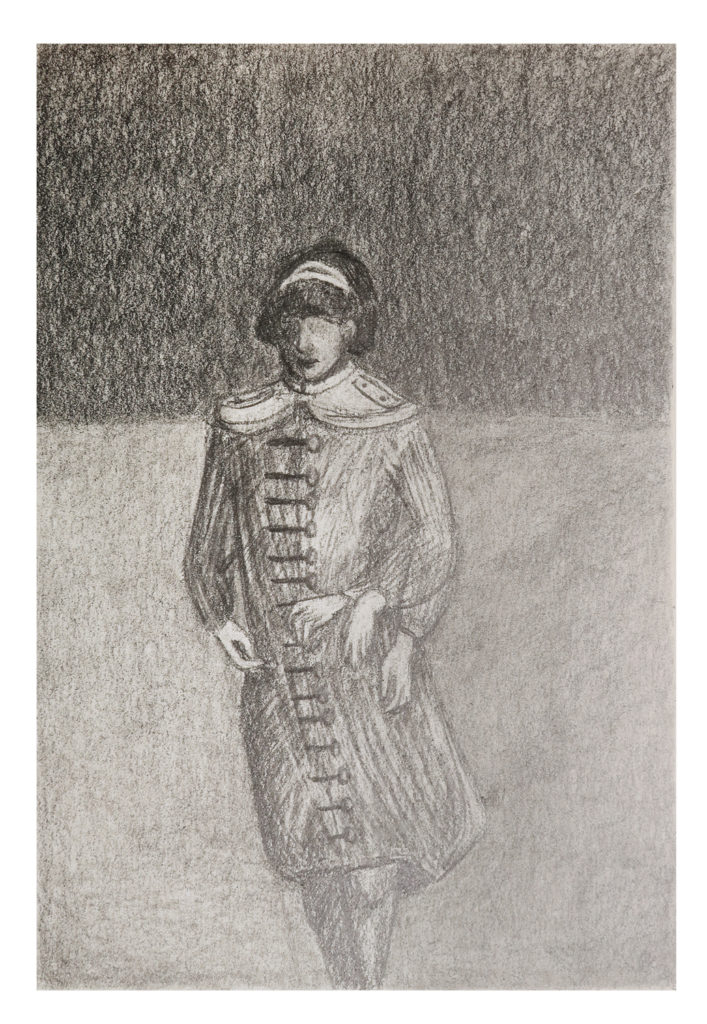Ik weet lang niet altijd het jaar waarin een foto genomen is die ik tegenkom in mijn vaders verzameling. In dit geval was het een foto van de aanstelling van een Heeroom in het dorp. Net als met de 1e communie zie je meisjes in witte jurken, kleine bruidjes die de intocht van de priester begeleiden. Het zal vast en zeker een eer zijn geweest mocht je mee lopen. Een dienstbaar, ceremonieel ornament. In een tijd dat wanneer je als vrouw trouwde je automatisch handelingsonbekwaam werd door je huwelijk en alle zeggenschap bij je man kwam te liggen. Nog maar sinds 1957 werd dit in de wet recht gezet en werden getrouwde vrouwen ‘handelingsbekwaam’, hoewel het nog tot 1970 duurde voor uit de wet geschrapt werd dat de man ‘het hoofd van de echtvereniging’ was.
‘You are privileged to parade, now smile’, 2020, Houtskool en siberisch krijt op papier, 68 x 69 cm.
I don’t always know the year in which a photo was taken that I come across in my late father’s collection. In this case it was a picture of the appointment of a ‘Heeroom’ (an uncle who is a Catholic priest) in the village. As with the First Holy Communion, you see young girls in white dresses, little brides who accompany the entry of the priest. A serviceable ceremonial ornament. In a time when, in the Netherlands, as a woman your legal capacity was taken away when you got married and the man had all authority.
Only as recently as1957 this changed and married women became “legally competend,” although it was not until 1970 that it was removed from law that the man was “the head of the marriage union”.
‘You are privileged to parade, now smile’, 2020, charcoal and siberian chalk on paper, 68 x 69 cm.
In deze tekeningen heb ik de meisjes ‘mannen’ kleding toegeëigend, zoals de hoofdtooien afgeleid van de Maasai. Hoofdtooien die oorspronkelijk werden gebruikt door Maasai krijgers om overwicht te creëren bij een aanval of oorlog en tegenwoordig voornamelijk nog gedragen wordt bij ceremoniële gebeurtenissen en feesten.
In these drawings I have appropriated (cultural) menswear for the girls, such as the headdresses derived from the Maasai. Headdresses originally used by Maasai warriors to create prevalence in an attack or war and today is mainly worn at ceremonial events and parties.
‘Keep Score’, potlood, houtskool & siberisch krijt op papier. 25 x 30 cm, 2020
‘Feniks/Phoenix’, potlood, houtskool & siberisch krijt op papier. 25 x 30 cm, 2020
‘Keep score II’, siberisch krijt & kleurpotlood op papier. 25,5 x 20 cm, 2020
‘Feniks II/Phoenix II’, potlood op papier, 21 x 15 cm, 2020
‘Omgaan met/To handle’, potlood op papier, 21 x 15 cm, 2020
‘Keep Score’, pencil, charcoal & siberian chalk on paper, 25 x 30 cm, 2020
‘Feniks/Phoenix’, pencil, charcoal & siberian chalk on paper. 25 x 30 cm, 2020
‘Keep score II’, siberian chalk & colored pencil on paper. 25,5 x 20 cm, 2020
‘Feniks II/Phoenix II’, pencil on paper, 21 x 15 cm, 2020
‘Omgaan met/To handle’, pencil on paper, 21 x 15 cm, 2020
